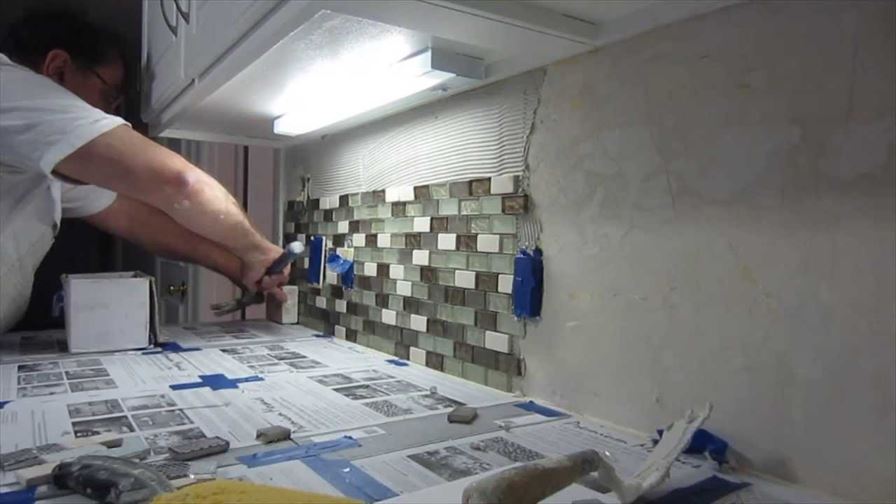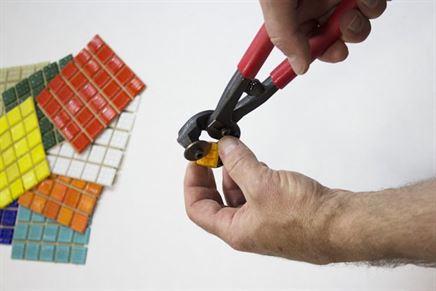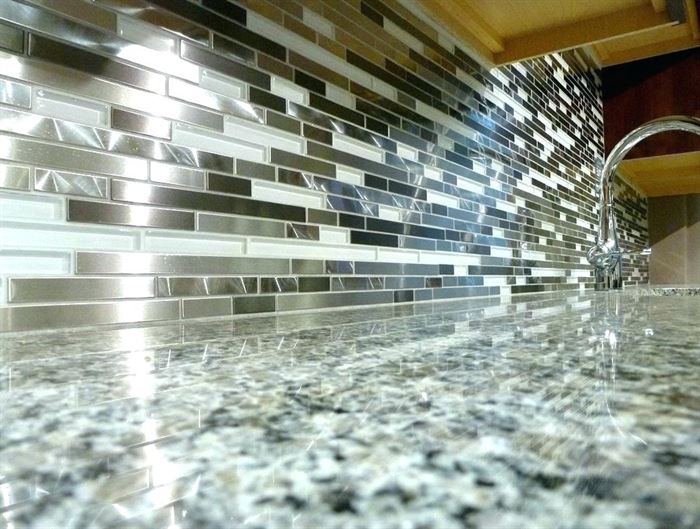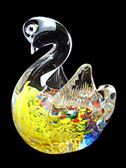How is the glass mosaic applied?

The ground to be applied to the glass mosaic, the surface should be very smooth first. Because if the mosaic floor is not flat, it can show an unpleasant look to the rugged eye. The use of cement-based adhesives during glass mosaic applications will help you avoid future problems. Epoxy, acrylic glass mosaic adhesives are likely to affect glass mosaics. It is also important to note that if the application surface is not covered with a cement based coating material, this also means that you will have a problem in the future. Let's say you've got gypsum plaster on your wall, and you've glued glass mosaics over that plaster plaster. This gypsum plaster can affect some types of glass mosaics in time by chemical interaction and may cause color degradation. What kind of glass mosaics may be affected by this question comes to mind immediately; In this subject, the type of crystal mosaics, which are generally called as cold painted from the crystal mosaic series, ie 900 celcius heat, is the type of crystal mosaics.
The glass mosaic adhesive is applied to the surface with a suitable fine comb, then the mesh glass mosaic plates are placed on the surface individually. Placed glass mosaic plates must complete each other's joint. Otherwise, the plates are formed from the fact that these joints are not bonded in a balanced and harmonious manner. This can definitely create an unwanted image. The glued glass mosaics are usually ready for the application of the joint filler after a period of time, after which the ceramic glue has been pulled slightly. The use of a suitable joint sealant for glass mosaics is also very important. In the kitchens, you can prefer antibacterial grouting as a glass mosaic joint. Attention should be paid to color matching. In general, application of a more light grout from the applied glass mosaic should be preferred to make the glass mosaics appear. Crystal glass mosaic tile crystal glass mosaic ceramic crystal mosaic application is the same way.
How to cut glass mosaic?

Glass mosaic, crystal mosaic, crystal glass mosaic may sometimes need to be cut to ensure that the finishes are uniform during application. Since our glass mosaics are made entirely from glass, they are actually small glass particles. You should draw our glass mosaics firstly with the glass diamond. However, if you don't have a glass diamond, you can also draw with ceramic tile cutting machine. According to Mohs hardness scale, the hardness of the glass is 6-7. Because quartz is harder than glass, it easily draws the glass.
Drawing a glass doesn't mean we cut our mosaics. We should do the crushing process immediately after drawing the glass mosaics. Because 2-3 minutes after drawing, the glass starts to cool down, so it becomes difficult to break the glass drawn and becomes impossible after a certain period of time. Well, we want to break the glass we want to break but we can not break the way we want to see the shape and size of the way we want. OK OK Keep your hands wide Betaş is your solution partner as a glass mosaic. In fact, the solution is very easy first, you have to have 2 pincers, if you don't have a pliers, 2 pliers will do the same, or a pliers will have a pliers. You can break the mosaics that you have previously drawn in the shape and size you want, by pinching the two nippers out of 1-2 mm. If you are cutting a glass mosaic that is larger than the mouth of the pliers, you can put a hard object under the pincers' mouths and break the glass mosaics as you wish by providing the pressure on the glass along the line drawn. However, do not try to break your hand, because small glass particles will cause you to cut your hand.
How to install glass mosaic?

The ground to be applied to the glass mosaic surface must be very smooth. Because if the mosaic floor is not flat, it can show an unpleasant look to the rugged eye. The use of cement-based adhesives during glass mosaic applications will help you avoid future problems. Epoxy, acrylic glass mosaic adhesives are likely to affect glass mosaics. The glass mosaic adhesive is applied to the surface with a suitable fine comb, then the mesh glass mosaic plates are placed on the surface individually.
Placed glass mosaic plates must complete each other's joint. Otherwise, the plates are formed from the fact that these joints are not bonded in a balanced and harmonious manner. This can definitely create an unwanted image. The glued glass mosaics are usually ready for the application of the joint filler after a period of time, after which the ceramic glue has been pulled slightly. The use of a suitable joint sealant for glass mosaics is also very important. In the kitchens, you can prefer antibacterial grouting as a glass mosaic joint. Attention should be paid to color matching. In general, application of a more light grout from the applied glass mosaic should be preferred to make the glass mosaics appear. Crystal glass mosaic tile crystal glass mosaic ceramic crystal mosaic application is the same way.
Glass - Vikipedi

Glass is an inorganic amorphous solid which is usually used in transparent or translucent form, which is usually hard, brittle and allows the storage of liquids. [1] Since ancient times, glass is used as construction and ornaments. Nowadays, there is still a widespread usage area from the simplest tools to communication and space technologies.
The glass is a fluid material consisting of a solution of the precipitated alkali and alkaline earth metal oxides and some other metal oxides, and the main material (SiO2) is silicon. The glass solidifies by preserving its amorphous structure. Due to the rapid cooling during production, the amorphous structure is formed instead of the crystal structure. This structure gives the glass strength and transparency. It is sometimes called liquid because it does not show the crystallization properties in solids. This naming is mainly due to the amorphous (non-crystalline, non-crystalline) structure.
History
The history of the glass dates back to ancient times. The earliest known glass items are the ancient Egyptian beads of approximately 2500 BC, although it is not clear when it was first produced. [2] In later Egyptian findings, glass vessels with colored zigzag patterns similar to feathers are found. In the modern sense, glass-making mosaic is found in Alexandria and the ancient Roman civilizations during Ptolemaic period. [2]



